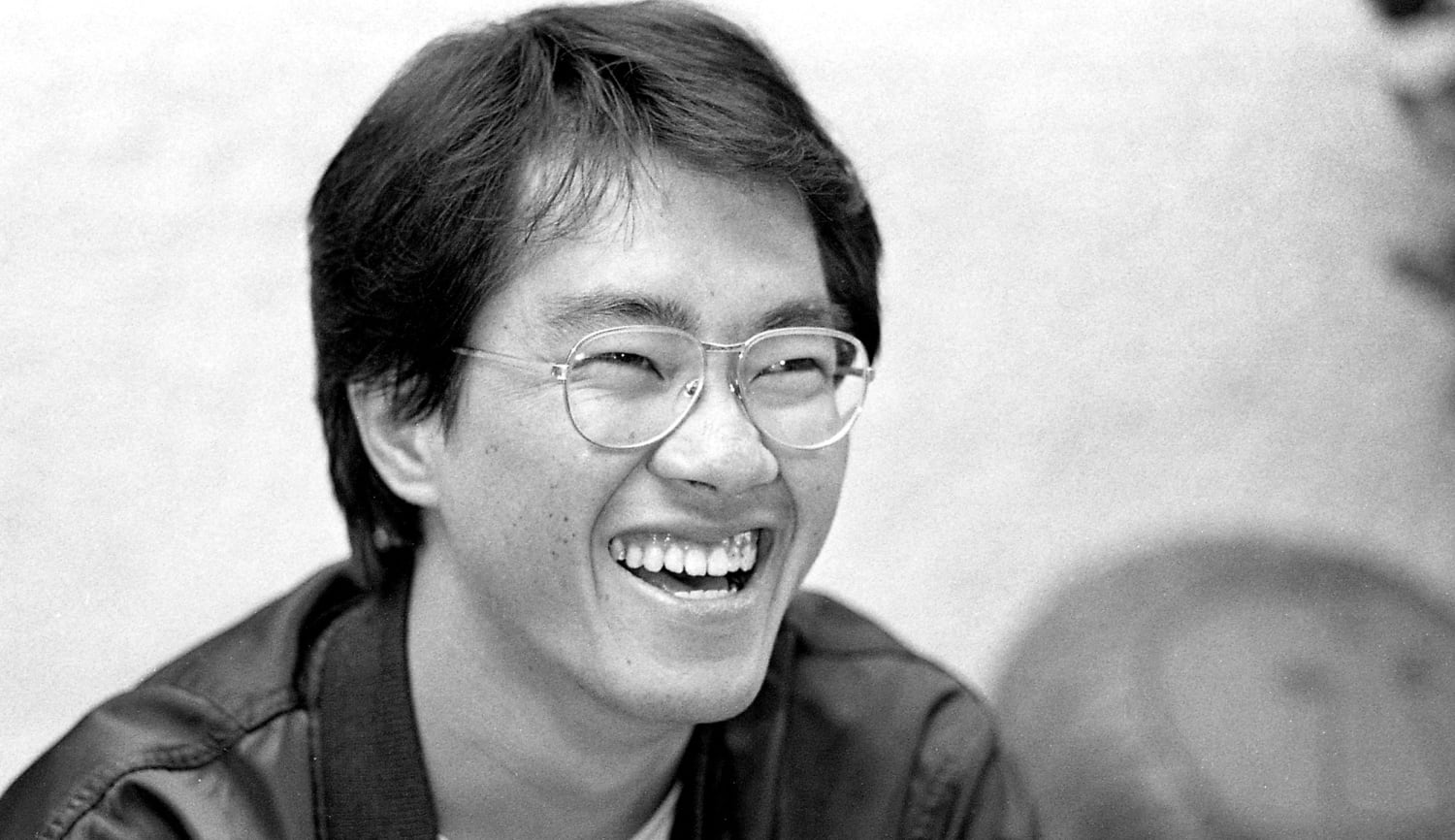Most University Times readers might not have read the ancient Chinese Text Xijou Ji or ancient Japanese text Nanso Satomi Hakkenden. But many are familiar with the more modern work that was directly inspired by these texts: namely Akira Toriyama’s famous manga and anime Dragon Ball, as well as its many sequels and offshoots. With the unfortunate recent passing of this legendary mangaka, or manga artist, let’s take a look back at his impressive catalogue of work and the endless rippling effects it has had on pop culture.
Toriyama was born in Nagoya, Japan in 1955, and spent most of his early life interested in drawing. Nagoya was, at the time, relatively rural, so young Toriyama passed the time drawing pictures of nature and his friends at school. In school he could often be found reading other’s manga collections instead of paying attention to his lessons. In this way, he quickly became drawn to Osamu Tezuku’s Astro Boy and tokusatsu films, or Japanese-style live action with lots of special effects. Kaiju films such as Godzilla are some of the most famous examples of tokusatsu films like the ones that inspired Toriyama when he was a boy. Toriyama also cited 101 Dalmatians as an early inspiration for him; he hoped that one day he would be able to draw pictures with the same level of vivacity.
As Toriyama advanced through his schooling, he became more and more interested in manga, drawing small manga strips in his spare time. Still, Toriyama emphasised in several interviews that he was always more interested in spending time with his friends and never fully committed to manga during his schooling. It was only in his early 20s, after he had quit a job drawing advertisements for a Nagoya ad agency, that he decided to give manga another try. He began submitting work to the magazine Weekly Shonen Jump! as a part of their new regular art contests. He submitted many works unsuccessfully, reportedly garnering over 500 pages in failed stories for the magazine and other publications over the course of one summer. Toriyama was nearly going to quit, but after yet another failed strip he was contacted by Kazuhiko Torishima, who would later become Toriyama’s editor, sent him a letter encouraging him to continue with his art and to perhaps think about adding a female character lead. Toriyama listened to the advice. The eventual result was Dr. Slump, Toriyama’s first resoundingly successful manga.
The manga followed the lives of an old doctor and his child-like but super strong robot Arale. It was serialised for roughly 4 years from 1980-84 in Weekly Shonen Jump! Regularly partaking in perverted humour and regular slapstick-style gags that would become part of the early style for Dragon Ball when it began in 1984.
Dragon Ball was a different beast entirely, for Toriyama and for the rest of the manga world. The story began simply, on Planet 4032-877 of Universe 7 (Earth), where Son Goku, a young boy with incredible strength and voracious appetite finds a little golden ball, a dragon ball, and it thrusts him into an adventure like no other. Gathering all 7 dragon balls, Goku eventually learns, summons Shenron, the all-powerful dragon with the power to grant any wish in the universe. Goku travels with friends to gather all the dragon balls in an adventure that eventually ends with him achieving God-like status and having the capacity to destroy the universe and all that resides in it. Goku, it is discovered, is an alien from the planet Vegeta, where the superhuman-like Saiyans reside. The once-young and naive boy spends his time using his great power preventing others with similar levels of power from destroying the universe, however. Beings such as Beerus, Buu, Frieza, Cell, and Jiren, who all have power capable of destroying entire universes and transcending dimensions, all eventually cave before Goku’s ever-growing strength over the course of the series.
The story followed many twists, turns and unexpected moments, even main character deaths (a total of seven). Son Goku evolved from an unassuming boy into a planet-killing, interdimensional demigod. Like Goku, Toriyama evolved in his tastes and his ability to take himself and his work seriously. Toriyama talked openly about considering ending the series multiple times, particularly after Goku and his friends defeat Cell, the most powerful being they had faced up until that point. Yet, fans begged for more, and Toriyama conceded to making several other “sagas” to Dragon Ball, including the Buu and Frieza sagas, which mark Toriyama’s full transition from the potty jokes and juvenile gags early on to the full-on fighting shōnen manga viewers know today.
Perhaps Toriyama’s legacy has never been more palpable than right now. Vigils, tributes, condolences from world leaders, murals, parades, and even national holidays have been offered to Toriyama’s estate. French President Emanuelle Macron uploaded a photo of a signed illustration Toriyama gave him as a gift, the Chinese government offered prayers in an official statement, while in Argentina, people gathered in Buenos Aires to give a “Kamehameha,” one of Goku’s signature moves that involves waving ones arms demonstratively for a large energy wave that disables enemies. Further, the creators and directors of Tekken, Naruto, One Piece, and Super Smash Bros all reached out to express their condolences to fans and family over social media. Needless to say, it is clear that Toriyama’s influence stretched much further than in Japan. From government sponsored watch parties in Mexico to Dragon Ball theme parks being built in Saudi Arabia, the acclaim and support the show and the manga has gotten from all corners surprised all when Dragon Ball was first becoming popular, Toriyama being among them. Toriyama stated in one of his final interviews that he only intended to “entertain the young boys of Japan,” so what makes the series so popular internationally?
Dragon Ball arrived at a relatively perfect time, with Japan still in the midst of its economic boom in the 1980s and Japanese influence on the world stage at an all time high. Japan began exporting culture at higher rates than before, and, for the first time, tailoring that content to those it exported to. Loose rules surrounding broadcast deals allowed companies like Cartoon Network to re-dub, reanimate, and even rescore Dragon Ball with new voiceovers, animations, and even music for a new Western audience. The after school “Toonami” add-on to Cartoon Network introduced an entire generation of kids to Japanese cartoons like Sailor Moon, Pokémon, and Dragon Ball. As Goku himself grew up as the show progressed, so did its young audience, who in turn introduced Dragon Ball to those who came after, creating a reliable dynasty of fans across the globe. This introduction was so successful that platforms such as Crunchyroll established permanent fanbases in Western countries, giving a reliable audience to anime produced with reputable English dubs at the time of release. Anime shows such as My Hero Academia, Attack on Titan, and Yu Yu Hakusho created a “weeaboo” subculture in many Western countries, mainly having to do with an obsession with Japanese culture, especially its popular media.
With this consistent fascination with Japanese media in the West, it makes sense that some of the most-engrossed countries with Dragon Ball are Mexico, Peru, France, El Salvador and the USA. This no doubt has contributed to Toriyama’s decision to keep Dragon Ball going all these years, despite his many flirtations with quitting.
Despite the countless hiccups Toriyama had with his motivation for continuing the franchise, and even despite his recent death in the beginning of March, it seems likely that Dragon Ball will continue. A series about Moro, another villain-turned-friend associated with Goku and his friends, is reportedly in the works, with other offshoot series to follow.







